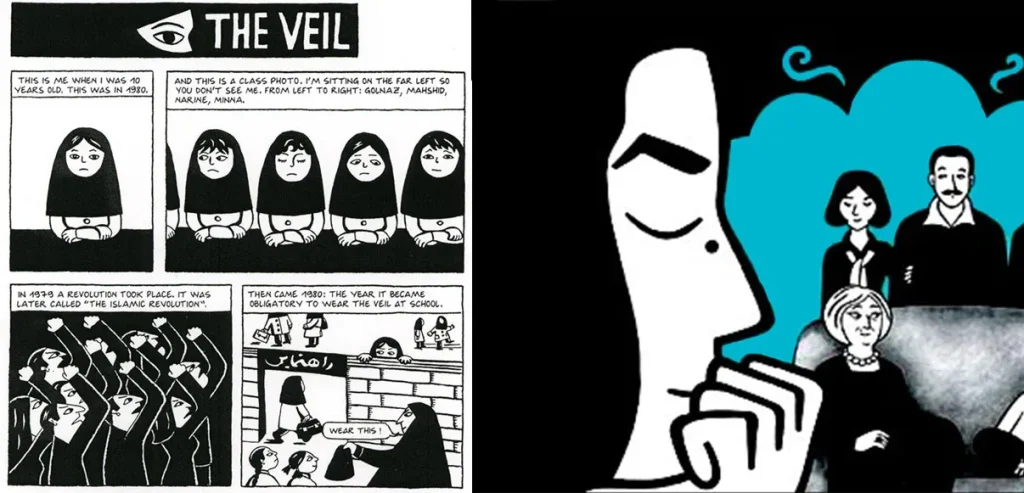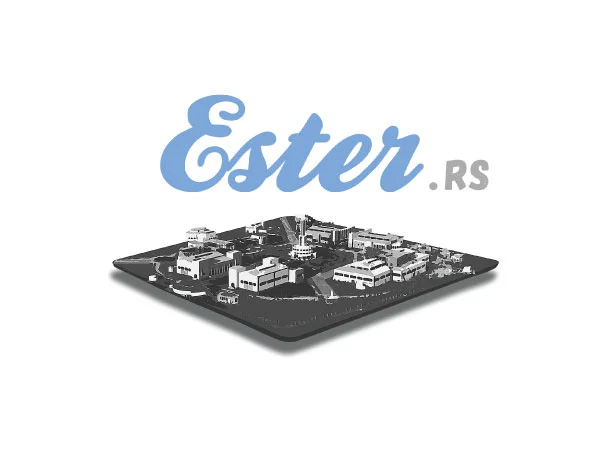Graphic novels can be viewed as stories told through pictures, that is to say, stories written and illustrated in the manner of a comic strip. Although they are comparatively recent, this kind of literary and pictorial narrative has been used in various forms for centuries, such as pictures on the walls of caves, Egyptian hieroglyphs or medieval tapestries e.g. the famous Bayeux Tapestry.
The term “graphic novel” was first used by Richard Kyle in his essay published in the comic book edition “Capa-Alpha” on November 1964, but the term became rooted only by the end of the seventies. Since 2001 the term “graphic novel” has been used as a standard category in the publishing business terminology.
“The Adventure of Obadiah Oldbuck” created by a Swiss caricaturist Rodolphe Töpffer published way back in 1828 is considered by many to be the first graphic novel. Comic books became very popular during the twenties and the thirties of the last century, but the real boom of popularity was caused by the first edition of “Superman” which appeared in 1938. A wider audience of readers is less aware of the fact that the Superman was created by two Jewish American students in a response to the Nazi concept of the Arian German “superman” (Übermensch). That is why the Superman created by Joe Schuster and Jerry Siegel represents an invincible hero who loves all people regardless of their nationality and religion dedicating his life to defending justice and democracy. Thus this comic book had also a social and political dimension, playing a certain educational role in raising awareness about the imminent evil of Nazism.
Although a graphic novel has been recognized as a form of artistic expression for a long time (comic book is called “the ninth art”), some parents, teachers and educational experts consider graphic novels inappropriate for the young people because of its content. But, as it is with other modern forms of narration, such as cartoons and film, there are some high quality graphic novels bearing real artistic value, and then again, there are some mass produced edition of them of no or very law quality. Rejecting graphic novels as inappropriate only because of their form – a narrative language based on illustrations – in fact, represents an opinion based on prejudices.

Aleksandar Todosijević
history teacher
1. How Do Graphic Novels Promote Literacy?
Motivation
Children are very attracted to graphic novels which motivate them to read. School librarians and educators have recorded a tremendous success in the use of graphic novels for teaching children. This is especially true for those “unwilling” readers, which are traditionally hard to be motivated to become fond of literature, however, graphic novels are rather popular in that group of students. Simultaneously, graphic novels with a complex plot and narrative structure can satisfy even more advanced readers. Implementation of graphic novels in a teaching process represents one of the methods to reach the students which constitute the group of slow or “unwilling readers”, that is to say, those students who deal with a traditional text with great difficulties. Graphic novels can play a significant role in teaching children with special needs enabling them to enrich their vocabulary and learn to read through a combination of a short text and a pictorial content.
2. Are Graphic Novels “Real Books”?
Do Graphic Novels Belong to “Literature”? Can Reading Graphic Novels Be Considered “Real Reading”?
Overcoming Prejudices
Earlier we mentioned that some parents and teachers didn’t consider graphic novels to be a type of literature suitable for reading, which could help the young to grow into readers and develop their culture of expression. It is a fixed belief that comic books have a bad influence to the young, undermining their culture of expression. However, librarians and educators tend to recognize that use of quality graphic novels for teaching the young represents a legitimate method of “telling stories” which is aimed to motivate children who do not like to spend their time with books to become readers. Thus graphic novels encourage reading habits of the young.
The idea that graphic novels are just oversimplified stories is obsolete nowadays. The quality graphic novels available to today readers represent such a demanding material, which requires reading skills for understanding of its contents, to the same extent as for traditional fiction. Readers are required to be actively involved into decoding contents and to understand the narrative structure, metaphors and symbolism. By using visual contents through narration, that is to say, intertextuality, reading graphic novels can help students to develop their reading skills necessary for understanding even some challenging works, including literary classics, too.
Do Graphic Novels Deserve Their Place in The History Curriculum?
Many teachers and educationalist have recorded a great progress in achievements of children, after integrating graphic novels into the teaching process, especially in the fields of the English language, the Serbian language and arts. They have discovered that graphic novels can be very useful teaching tools which help students to analyse critically the particular aspects of language, literature and arts. Graphic novels combine a written narration with illustrations in a unique fashion, that is to say, they can tell a story through a dialogue or provide information and explain a term, or provoke emotions by the sequence of illustrations.
Graphic novels are about to find their place in school curriculum. Historical graphic novels have a great potential to bring the past closer to students thus modernizing the traditional process of teaching history. The richness of a narrative structure and layers of contents provide a way to help students understand the complexity of individual phenomena and processes in history. By using graphic novels for teaching, teachers enable students to understand some of the greatest challenges of historiography, especially such delicate and controversial issues as: crimes of genocide, the Holocaust, terrorism and like. By analysing graphic novels we deepen students’ understanding of individual complex historical processes in much greater extent compared to the traditional teaching process based on mere interpretation of the contents. Nowadays use of game (gamification) in teaching process represents one of the greatest educational challenges.
Teachers are offered a wide spectrum of methods of using graphic novels in teaching process:
- as a source of illustrations – analysis of the visual sources of knowledge;
- providing a source of information – a way of learning new knowledge;
- used for initiating a conversation and discussion with students;
- the individual creations of comic books – students create their own visual stories
3. Some of the Best Graphic Novels Suitable to Be Used in Teaching History
Maus
„Maus“ written by Art Spiegelman represents a story about the life of his parents, Jews living in occupied Poland during the World War II. This graphic novel is an allegory, which sheds light on delicate questions about the Holocaust, where Jews are represented as mice, and Nazis as cats. It treats all important problems of the Holocaust: ranging from antisemitism to the notorious concentration camp Auschwitz. “Maus” is the only comic book which won a Pulitzer Prize.

Persepolis
“Persepolis” is a graphic novel written by Marjane Satrapi which describes the Islamic Revolution in Iran seen through eyes of a child. This is, in fact, an autobiographical story about growing up in Iran, permeated with the revolutionary and political themes. “Persepolis” became a bestseller in the USA, and an animated version was nominated for Oscar and won Palm d’Or at the Cannes Film Festival.

4. Ester Series – Teaching Materials Based on the Graphic Novel Language
How to “Read” Graphic Novels – Teacher Manual
Students aged 12-18 are not equipped with enough experience and knowledge to “read”, that is to say, interpret various historical sources such as historical documents, photographs, video and audio recordings unaided. Many teachers are not willing to use visual historical sources in the teaching process, rarely critically analysing them with students as they do with the written texts. Teaching materials based on the language of graphic novels are insufficiently used as a history teaching method in the Republic of Serbia. Series “Ester” is an attempt to enable teachers to implement some quality teaching materials based on the language of graphic novels in the process of teaching history.
It must be pointed out clearly that graphic novels, being a type of visual teaching materials, do not represent historical sources; but it is also important to underline that they are created according to the studies of relevant historical sources. Their main purpose is to shed light on certain historical events, which are not documented by photographs or video recordings, but are reconstructed in accordance with documents and other relevant historical sources. Consequently, in order to help illustrators to reconstruct historical events, places and characters, expert historians, archivists, and educators from Serbia, Germany, Austria and Netherlands took part in the process of creation of this material, ensuring historical accuracy as much as possible.
a) Analysis of the scenes (situations) from everyday life
Carefully studying the illustrations, students are searching for the information that refers to the characteristic social aspects of a given historical period. Their search should focus on gathering data, detecting the layered shades of details and “reading” hidden information on the illustration. In addition, students are offered to use comparative historical sources (such as historical newspapers and photographs) depicting same locations, time periods and sometimes even the same people. In this way, students can recognize and discover more details, and “solve” little puzzles placed in the illustrations on purpose.
Example 1

TIME: Sunday 3. September 1939. | LOCATION: ariska street, Kalemegdan, Belgrade
A day at the races
It was such a beautiful day in Belgrade. Aleksandar was excited-– today was the day Belgrade hosted the Grand Prix at the circuit around Kalemegdan Park! The park engulfed the centuries old fortress, nestled on the hill that overlooked the place where the Sava and Danube Rivers met, guarding Belgrade. Already for weeks he was talking about this race with Bogdan, his best friend and classmate. Aleksandar’s father kept his promise to take the boys to the races. They arrived very early in the morning to the stands opposite of the French Embassy. Prepared to spend a whole day at the races, they brought along a basket of food. (…)
Investigating Tasks
Describe what you see on the illustration! What event is illustrated here? Pursuant to the text, search the Internet for the article about the above event in “Politika” daily published during that time period! Where did the above event take place? Take a picture of the above location with your cell phone or tablet to show how it looks like today! Explain which structures you recognize at the illustration by looking at the taken picture! Describe how people are dressed! Are there any social differences between gathered citizens that catch your eye? What is your conclusion: do the Belgrade Jews look any different from other citizens? Why is the day when car racing are held significant in general history? What happened then? (Comparatively analyse time lemmas Europe – Serbia, and the given illustration.)
b) Comparative analysis of the illustrations presenting the same location, but in the different time periods
Students’ basic task is to search for historic changes of continuity in the context of the history of the pre-war everyday life of the Jews and their everyday life during the Holocaust by using visual materials. The focus is on the same characters, illustrated at the same locations, but under different historical circumstances.
Primer 2
22. September 1940
The first scene represents the pre-war life, namely, celebration of Shabbat. We can see a room full of people, many guests – both Serbs and Jews, there is music, food on the table, as well as many other details in the room…
17. October 1941
The next scene illustrates the same situation – celebration of Shabbat, but under completely different circumstances. There are only woman and children. Men were taken to the concentration camp. The atmosphere is sad and gloomy. Many of the commodities in the room are missing.
8. December 1941
The third scene in the same space represent packing and preparing to go to the concentration camp at Sajmiste – which is another step closer to their end.
Investigating Tasks
Details on the illustrations are multi-layered. This give many possibilities for teachers to use them in the classroom in different ways. Organizing workshops where students divided into groups perform their tasks is also a possibility.
- Who are the illustrated characters? All characters are real; their destinies can be followed through the documents and historical sources. Investigating the documents, photographs and other historical sources, students investigate the facts about their lives and destinies.
- Commodities in the flat – Investigating the post-war war damage reports it can be found out what commodities they had in their flat (Why are some commodities missing? Why were Jews not allowed to possess a radio? etc.)
- What was the situation for the Belgrade Jews before and during the World War II? (Why do they wear yellow ribbons? Why are men missing on the second illustration?
c) Teaching at historical sites
All illustrations depict events that took place on exact dates and at exact locations (sites), which gives another teaching opportunity: teaching at the locations. Teaching at historical sites represents quite a challenge both for students and teachers. Teachers should plan a certain amount of lessons and extracurricular activities to be taught at historical sites, in museums etc.
Example 3
Beside the comparative analysis of the illustrations that depict the same location, which is explained by the above example, students can be taken out of their classes to visit the historical site itself – in this case the Old Fairgrounds, which gives many options of teaching scenarios: ranging from reflections on how the site looks today, what changed and what is still the same, to discussions about commemoration and memorialization, the forgotten and endangered historical sites, and so on.
Scenes represented on the illustrations follow the story about the Demajo family. Pursuant to the story of the destiny of the Demajo family one can analyse the pre-war everyday life of Jews, as well as the sufferings of Jews during the Holocaust.
Investigating Tasks
A teacher organizes a lesson at the Old Fairgrounds site. Students use their cell phones and tablets in order to take pictures of the most significant localities at the Old Fairgrounds: the monument, the Central tower, Spasić’s pavilion, Hungarian pavilion and other structures.
Guided by their teacher, students reconstruct how the concentration camp at Sajmiste looked like during the war, and prepare presentations about the history of the camp.
5. General Methodological Remarks for Teachers
Social History (the history of the everyday life of local communities)
By teaching the history of everyday life, educational materials based on the language of graphic novels help us to make students understand the elements of everyday life, such as: family relations, food and cuisine, education, children games, fun, dwellings, clothes and fashion etc. Students’ curiosity, creativity and their spirit of enquiry are encouraged in this way. Students will train to form a clearer picture of the past, by learning some elementary procedures of gathering historical materials, as well as by developing a critical relation to it. Students will understand more about the characteristics of dynamics of the cultural changes, and how to see themselves in the context of “the other”, in order to integrate their own identities into a wider context of the present time challenges. Contemplating the history from the individual’s point of view makes it more relevant to students. By presenting historical events through “the life of a common man”, and not only relating it to the life of rulers, statesmen and commanders, students are able to identify with the characters, bringing more empathy and understanding. By providing an insight into the life of a “common man” we can point out characteristics of a certain state and its system, and how the certain religious and ethnic communities lived at a certain territory.
Teaching about the Holocaust, genocide and other forms of discrimination is not sufficiently included in the educational system of the Republic of Serbia. In the elementary school curriculum in Serbia there is no particular teaching topic, nor teaching unit which deals with the Holocaust. Current content in the history textbooks related to the Holocaust are taught by providing mere information, numbers and statistics. In everyday practice, teaching about the Holocaust is based almost exclusively on presenting the fundamental information about sufferings in the death camps, such as Auschwitz and Jasenovac. That kind of approach to such a complex problem as the Holocaust and related phenomena doesn’t allow a teacher to focus on that topic, and consequently students are not able to form a complete picture and understand the causes and consequences of the greatest crime in the history of mankind. That is why it is more difficult for students to get a whole and profound picture of these significant historical phenomena.
Educational materials based on the language of graphic novels enable us to demonstrate that behind all data, numbers and statistics there are real people. It is a personal story that is engraved in our memory and helps us remember an event. Authentic stories, illustrated by graphic novels about individuals and families perished during the Holocaust, enables children to see real human faces in historical events analysing and contemplating these events analytically – in more layers and dimensions. This way we contribute better to the essence of teaching about the Holocaust: we must never forget the Holocaust so that it never happens again.

